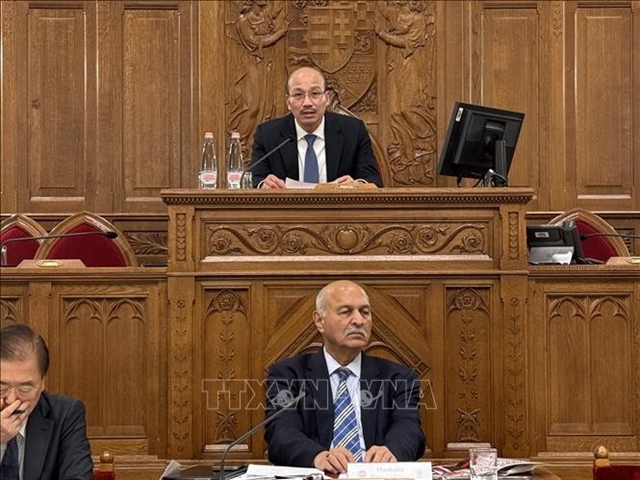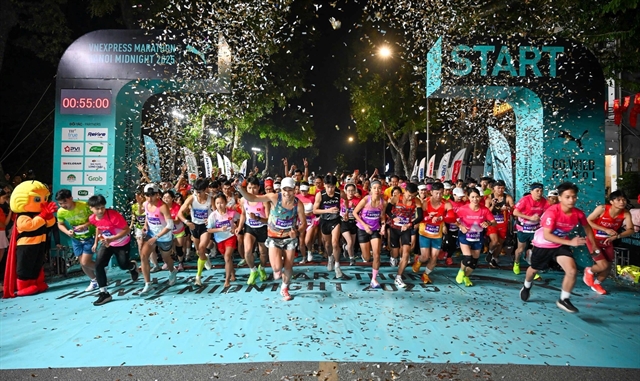 Society
Society
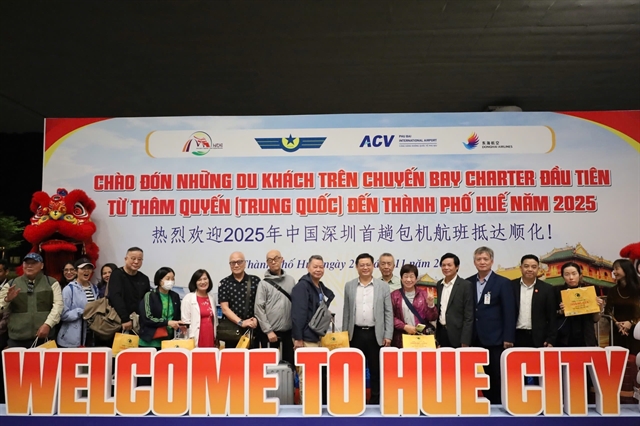
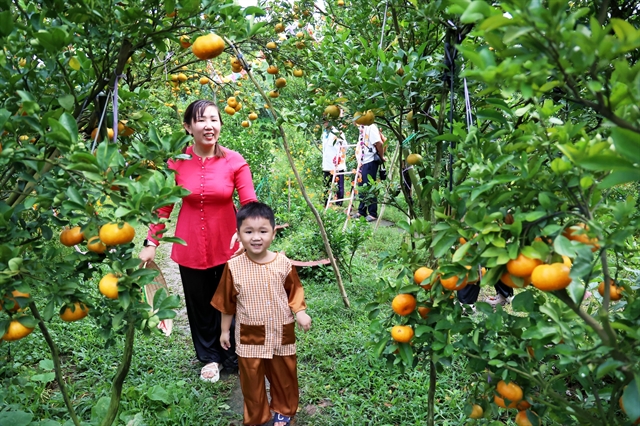 |
| Tourists visit a pink mandarin orchard in Đồng Tháp Province’s Lai Vung District. – VNA/VNS Photo Hồng Đạt |
ĐỒNG THÁP – Đồng Tháp Province is positioning tourism as a pillar of its economy, adopting sustainable development approaches and cultural branding to attract visitors and boost revenues.
The Cửu Long (Mekong) Delta province received over 18.5 million tourists between 2021 and 2024, earning revenues of VNĐ8.5 trillion (US$326 million).
Huỳnh Thị Hoài Thu, director of its Department of Culture, Sports and Tourism, said 1.6 million visitors arrived in the first quarter of this year, up 40.9 per cent from the same period last year.
This figure included around 12,000 foreign tourists.
Revenues in the first quarter topped VNĐ900 billion ($34.5 million), an 87.5 per cent increase year-on-year.
Huỳnh Minh Tuấn, deputy chairman of the province People’s Committee, said the province was focusing heavily on tourism, gradually turning it into a leading economic sector.
He said efforts were being made to improve the scale and quality of services and products, helping establish Đồng Tháp as one of the most appealing destinations in the delta.
He added that the province was also promoting tourism, encouraging investment, developing its workforce, protecting resources and the environment, ensuring security and safety, and innovating coordination across sectors and regions.
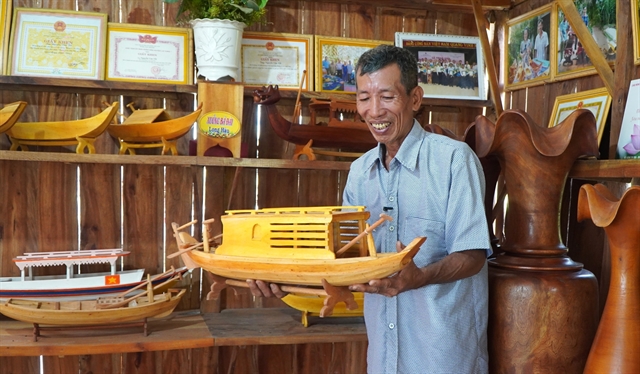 |
| Nguyễn Văn Tốt is a pioneer in researching and crafting various types of miniature boats in Long Hậu Commune in Đồng Tháp Province’s Lai Vung District. His products are sought after by both domestic and international customers for displaying and as souvenirs. – VNA/VNS Photo Nhựt An |
The People’s Committee has approved a tourism development plan for 2025, which prioritises promotion, product advertising under the One Commune – One Product programme and the development of agricultural tourism integrated with festivals, cultural and sports events, fairs, and conferences.
This plan aims to enhance the province’s image and attract more tourists, building on its well-known “Pure as the Soul of the Lotus” brand identity.
The province is aiming to attract five million tourists this year, including 60,000 international visitors, an increase of 11.4 per cent over last year.
Tourism revenues this year are projected to reach VNĐ2.4 trillion ($91.9 million).
Tourism destinations
Đồng Tháp is home to over 100 agricultural, community and craft village tourism sites that are operating effectively.
Tourism sites include Tràm Chim National Park in Tam Nông District, where visitors can view wildlife, take part in farming and enjoy nature.
The district has promoted community-based tourism by connecting the park with people living in the buffer zone nearby.
The province’s varied offerings combine cultural heritage, ecological preservation and local involvement, making it a draw for those seeking authentic rural and farming experiences.
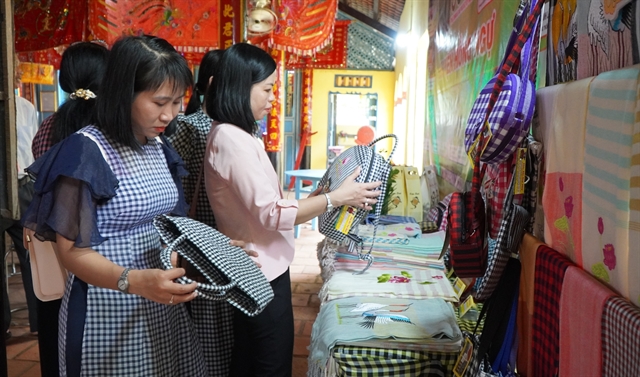 |
| Tourists buy products in the Long Khánh A Commune scarf weaving village in Đồng Tháp Province’s Hồng Ngự District. – VNA/VNS Photo Nhựt An |
The Xẻo Quít National Historic Site in Cao Lãnh City offers catching fish and ducks in the river, boat races, camping and growing organic vegetables.
The Gò Tháp National Historic Site in Tháp Mười District displays cultural relics from the Óc Eo Civilisation, which was linked to the ancient Phù Nam Kingdom and flourished between the first and seventh centuries.
The 100-year-old flower village in Sa Đéc City is one of the largest flower-producing areas in the region, with ornamental plants grown on 970ha by 4,000 households, an increase of 1,000 since 2022.
The city is building its image as a centre for community tourism, with 20 such sites now growing over 510ha of flowers.
Of these, six have been recognised as part of the OCOP programme.
Huỳnh Thanh Tuấn, who has spent 25 years growing flowers and ornamental plants in Tân Quy Đông Ward, said he stayed in this profession because it not only added beauty to life but also offered a better income than many others.
“My hope is for the flower village to continue developing, finding new, high-value varieties that bring more tourists to our community.”
To help promote Sa Đéc to both domestic and foreign visitors, the province will hold the second Sa Đéc Flower and Ornamental Plant Festival in late 2025, featuring 28 events including a food street, flower and plant market and village tours.
 |
| Lotus farms offering tourism services in Đồng Tháp Province’s Tháp Mười District. – VNA/VNS Photo Nguyễn Văn Trí |
Known as the “Land of Pink Lotus,” the province is also developing tourism centred on its lotus fields.
Nguyễn Văn Hiệp, deputy chairman of the Tháp Mười District People’s Committee, said large-scale lotus cultivation had been expanded to cover 282.8ha and attracts some 1.5 million visitors each year.
“This has helped raise the cultural and economic value of lotus in the district’s tourism growth.”
Hồng Ngự District is home to 18 ancient houses, most of them over 100 years old and mainly located in Long Khánh A Commune.
Some owners open their houses to visitors free of charge, preserving the local heritage while supporting tourism.
Nguyễn Hoàng Việt has thrown open his 130-year-old house in Long Khánh A Commune to the public.
As the fifth generation in his family to manage it, he said: “I feel proud to promote my family’s traditions and introduce more people to the religious culture and daily life of the people here in the past.
“I am always glad to see increasing numbers of both local and foreign visitors coming to experience it.” – VNS



